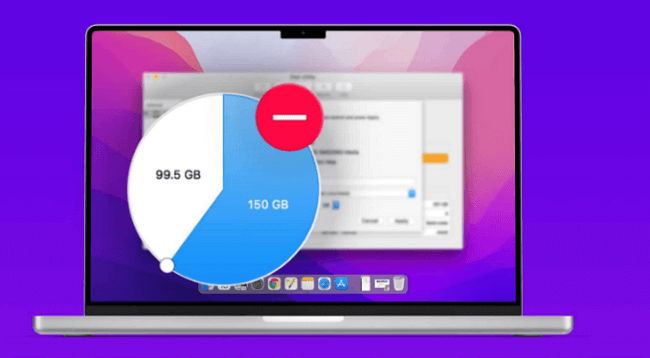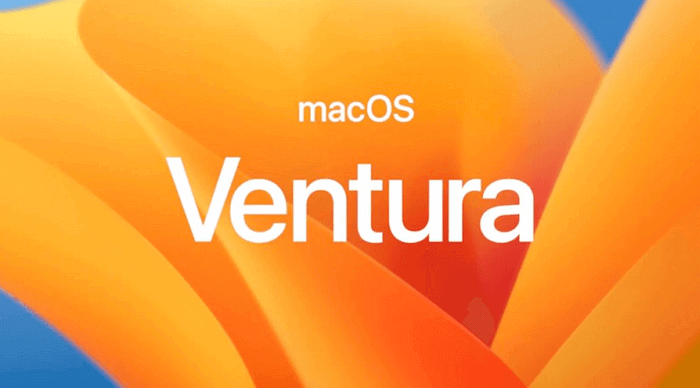Have you ever faced a frozen screen where you couldn’t even shut it down on your Mac? It would be a frustrating and disconcerting experience when you are struggling with issues like an unresponsive or frozen system. Therefore, knowing and mastering the skill of how to force shut down or quit a Mac will come in exceptionally handy and help you get out of trouble. In this article, we will provide a complete guide for how to force shut down on Mac effortlessly and successfully, you can try them in turn. Let’s get started.
Part 1: Things to Know Before Forcing a Shutdown on Mac
First of all, we recommend that you choose normal shutdown if possible and try to avoid forced shutdown of your Mac. Because this operation will not allow saving any unsaved data and may cause existing files to be corrupted. However, if you have no other options but need to proceed with a forced shutdown on your frozen Mac, there are a few things to consider:
Precaution 1: Save All Open Files
When your Mac is working on a heavy project, it’s likely to freeze at some point. A forced shutdown means that everything closes immediately, so if you’re busy working with Word, or Excel files, you’ll lose any unsaved changes. Before continuing with the forced shutdown or quitting, try to save the ongoing work. Click on the open file and press Command + S or select File > Save.
Precaution 2: Stop Running Apps
In some cases, the freezing of the Mac happens due to some running application making an error and refusing to quit. Therefore, you may need to manually close all running applications, which may help you to shut down the system normally. To quit the current app, press Command + Q or click the app icon in the menu bar and choose Quit (App). And if the cursor is stuck and not working, you can use Command + Tab to navigate from one app to another. In addition, if any app is still not quitting, press Option + Cmd + Esc and select the app > Force Quit.
Precaution 3: Eject External Drives
It is noted that if you have any connected external devices, such as external hard drives or USB drives, make sure you safely eject them before you command a forced shutdown on your Mac. At the same time, in either case, an unsafely ejected external drive could cause irreparable damage to files. To avoid damage to data stored on an external drive, go to the Desktop and drag the external drive to the Trash icon in the dock. Then, if possible, you can access the Finder, open it, and click the Eject icon next to the external drive in the sidebar.
Part 2: How To Force Shut Down or Quit Your Frozen Mac
If your Mac is completely frozen and unresponsive, such as there’s a spinning ball in place of the cursor, and the cooling fan operates noisily with high speed, then you should apply force shutdown on the Mac. In this section, we will provide 4 methods to force the shutdown Mac, you can try them in turn.
Method 1: Press and hold the Power Button
The Power button is located differently on various versions of Mac. Once you have located the Power button, long-press it for at least 10-12 seconds until the screen goes black.
- If you are using a MacBook Pro or MacBook Air, you can find the Power button at the top-right corner of your keypad or touch bar.
- If you are using an iMac, the Power button is a circular button at the back of the monitor. If you’re looking at the iMac from the back, it’s at the bottom-right corner of the device.
Method 2: Force Quit the Running Apps and Shut Down the Mac
As mentioned in Part 1 above, the freezing of the Mac happens due to some running application making an error and refusing to quit. In this case, you need to force quit the app. Here are 3 options to force quit the running App interface.
Option 1: Force Quit Using Keyboard Shortcut
Press the Option + Command + Escape keys together. The Force Quit menu will be opened and select the app that refused to quit and press Force Quit to close it. Once you have quit all the apps, you can quit and shutdown the Mac normally. However, if this method does not work, you can try another way discussed in this part.
Option 2: Force Quit Using Apple Menu
Step 1: Locate the Apple logo and open the dropdown menu.
Step 2: Access the dropdown menu and select Force Quit.
Step 3: A new pop-up window with details of all the applications will be opened. Select the application you want to shut down from the options. If you want to close multiple applications at the same time, use the Command button to select multiple options at once.
Step 4: Select Force Quit again in the new window. Upon this, a pop-up window will notify you that the application will not save any new changes.
Step 5: Choose Force Quit again.
Option 3: Force Quit Using the Dock
Step 1: Locate the unresponsive app on the dock.
Step 2: Press the Option key.
Step 3: Right-click on the application’s dock icon.
Step 4: Select Force Quit.
Method 3: Use a Keyboard Shortcut
There are two keyboard shortcuts available that you can use to shut down your Mac. The difference between them is the first one allows you to safely close all the running apps and shut down your Mac without data loss. While the second one will force it to show down instantly, and it may cause lost data. Therefore, we recommend using the first shortcut way to shut down the Mac system.
- Press and hold the Control + Option + Command + Power button for a few seconds to normally shutdown your Mac.
- Press and hold the Control + Command + Power button for a few seconds to forcefully shutdown your Mac.
Method 4: Remove the Power Supply and Drain the Battery
If the above methods have not worked for you, you can force shutdown Mac by removing the power supply and draining the battery. But it’s important to keep in mind that this operation is harmful and may cause you huge data loss and file corruption on the hard drive. Additionally, different versions of Mac batteries also drain at different rates. The time depends on the battery’s health and the amount of charge. Such as the new Mac models, including MacBook Air, or MacBook Pro, come with un-detachable batteries which may take 10 to 15 hours to drain out the battery.
Tip: Here are some simple ways to help you improve your MacBook’s battery life.
Part 3: Why Mac Keeps Freezing
If your MAC is often frozen, you need to carefully find out the reason and learn some knowledge on how to avoid it in the future. Here we listed some common reasons that cause Mac to keep freezing:
- Check if you have enough space on your hard drive.
- Delete apps you no longer use.
- Run a malware scan.
- Update your macOS.
- Boot your Mac into Safe Mode
Part 4: Recover Data from a Mac Using Third-Party Data Recovery Software
If your data is accidentally lost during a forced shutdown, we recommend using ONERECOVERY. It’s an efficient and professional software to get back your valuable files in data loss scenes. This tool is compatible with Windows and Mac, without any complicated steps, making you experience the satisfaction of regaining. More importantly, the free trial is available, wherein you can try all its unique features as you need.
For data recovery using ONERECOVERY, follow these steps:
Step 1: Download, install, and launch ONERECOVERY software on your system.
Step 2: Select the hard disk where you lost data. The ONERECOVERY will start scanning the disk to search for your lost data and files.
Step 3: After the scanning process is completed, you can check all recovered folders. Preview and select your recovered folder by clicking the “Recover” button.
Step 4: Finally, save the recovered folders on a safe hard disk or other devices.
Part 5: Conclusion
After reading this article, you might know several available ways to force the shutdown of your Mac system. Once the system is frozen, check if all the methods mentioned above are helpful to you. But before you do that, you can try to force quit the applications you’re running. If the system is back to normal, the fastest and most efficient way that we recommend is to use professional data recovery software such as ONERECOVERY FOR FREE.
All of your lost data can be easily recovered from a computer’s hard drive, a flash drive, an SD card, or any other external storage device with the help of ONERECOVERY’s comprehensive and expert solutions.
I’m a tech enthusiast specializing in computer repair and data processing. Outside of fixing gadgets, I love penning articles on computer science. Currently, I’m diving deep into AI and data recovery tech. I’m all about staying on top of the latest in these fields. Excited to bring my passion and skills to the table and collaborate on cool projects!







